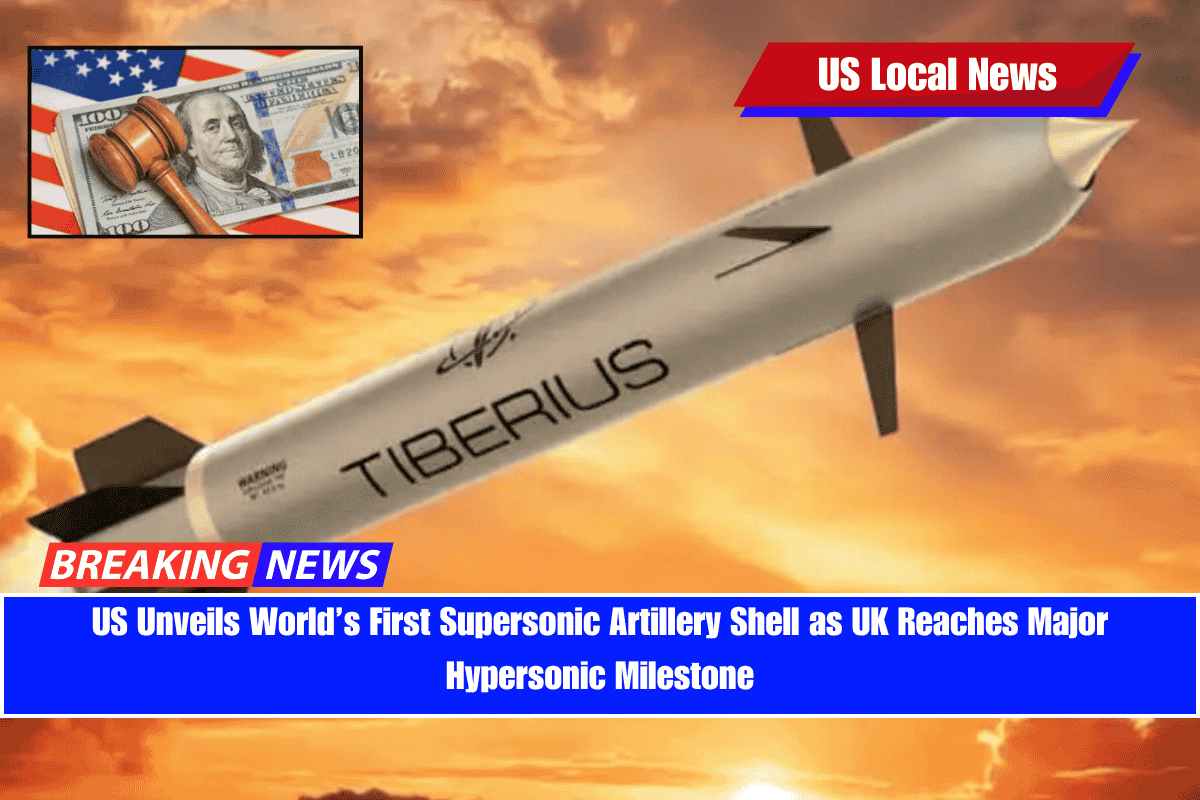The United States and the United Kingdom are stepping into the future of defence with powerful new missile technologies. While the US has revealed the world’s first supersonic artillery shell, the UK is celebrating a big success in the race to develop hypersonic weapons. Both advancements show how global defence efforts are quickly evolving to meet modern threats.
US Unveils Sceptre TrBM 155HG: Supersonic Artillery with AI
At the Future Artillery Conference in London, Tiberius Aerospace, a UK-US defence company, revealed the Sceptre TrBM 155HG—the first-ever supersonic artillery shell.
Key Features:
- Speed: Reaches 2,700 mph (Mach 3.5)
- Range: Hits targets up to 100 miles (150 km) away
- Altitude: Flies up to 65,000 feet
- Technology: Equipped with AI, GPS, and real-time error correction
- Engine: Powered by a ramjet engine, using diesel, JP-4, or JP-8
- Shelf Life: Over 20 years thanks to its liquid fuel design
- Resilience: Resistant to GPS jamming and electronic countermeasures
This smart, fuel-efficient missile offers longer storage life, fewer risks, and better integration into existing supply chains. CEO Chad Steelberg calls it a “10X solution” in range, precision, cost-effectiveness, and survivability, calling it a weapon designed for future battlefields.
UK Makes Breakthrough in Hypersonic Missile Development
At the same time, the UK Ministry of Defence has reached a major milestone in developing its own hypersonic missile engine, aiming to have it ready by 2030.
The new air-breathing engine can power missiles at over Mach 5 (five times the speed of sound). This is part of a £1 billion investment to ensure the UK stays ahead in modern defence.
Engine Test Success:
- 233 static trials were carried out at NASA’s Langley Research Centre in Virginia
- The engine was tested at different supersonic and hypersonic speeds
- Developed in collaboration with Dstl, the US Air Force Research Lab, and UK company Gas Dynamics Ltd
Defence Secretary John Healey stated that this achievement proves the importance of UK-US cooperation in strengthening military innovation and national security under the AUKUS alliance.
Iron Dome: Israel’s Famous Defence System Explained
While the US and UK push forward with missile technology, many still ask about Israel’s Iron Dome—the well-known air defence system.
How It Works:
- Detects and intercepts short-range rockets, missiles, mortars, and drones
- Uses radar-guided interceptors to destroy threats mid-air
- Only fires if a projectile is headed toward a populated or strategic area
Stats & Performance:
- Effective range: up to 43 miles (plans to expand to 155 miles)
- Interception success rate: Around 90%
- Protected Israel during thousands of rocket attacks since 2011
- In October 2024, successfully intercepted most of 180 missiles fired by Iran
Limitations:
- Can be overwhelmed by large-scale missile barrages
- Works best against limited attacks
- Forms one part of Israel’s three-layer defence, alongside David’s Sling and Arrow 2/3
As threats evolve, countries like the US, UK, and Israel are developing next-generation technologies to stay protected. The Sceptre TrBM 155HG marks a new era of supersonic artillery, while the UK’s hypersonic engine project keeps it in the global race for advanced missile systems.
Meanwhile, Israel’s Iron Dome continues to prove itself as one of the most successful defence systems ever made—though even it has limits. These developments show a clear message: military innovation is speeding ahead, and the battlefield of the future will rely on speed, intelligence, and adaptability.











Leave a Reply